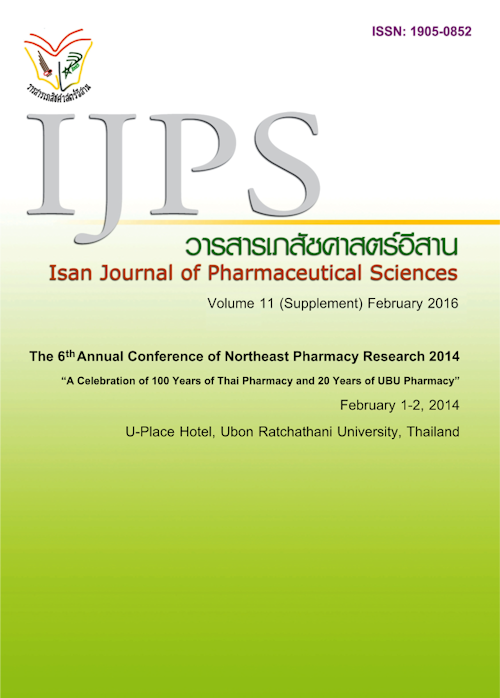Traffic Rule Compliance Behavior of Community in Ubon Ratchathani University
Main Article Content
Abstract
Introduction: Traffic accident is an increasing problem in Ubon Ratchathani University community. Injuries from traffic accidents lead to serious effects not only physical and mental health but also economical loss Human errors are factors affecting to road traffic accidents. The objectives of this study were to investigate the traffic rule compliance behaviors of Ubon Ratchathani University Community and to apply theory of planned behavior (TPB) to predict traffic rule compliance behavioral intention. These findings will be used as a basic information for planning to solve traffic rule compliance behavior of community. Materials and Method: A descriptive, cross-sectional study was done. Participants were selected by accidental sampling during January 2013. Theory of planned behavior was used for developing a questionnaire to assess traffic rule compliance behavior Descriptive statistics were used. Correlation and simple linear regression were used to investigate the association between traffic rule behavioral intention and 1) attitude towards behavior, 2) subjective norms concerning behaviors, and 3) perceived behavioral control withthe significant level of 0.05. Results: Three hundred people in community were willing to participate in this study. They were divided into three groups including students, university staff and local people (39.3%, 28.7% and 32.0% respectively). Most samples self-reported that they did not comply to traffic regulations including not wearing helmet or using safety belt while driving (53.9%), driving against the traffic flow (66.4%), not following traffic signal light (47.6%) and driving exceed speed limit (50.2%). The application of theory planned behavior showed that the samples had positive attitudes toward traffic regulation compliance behaviors, good subjective norm and perception on traffic rule compliance and perceive behavioral control (PCB) in general score. However, PCB was a significant construct variable to predict behavioral intention on traffic rule compliance. Conclusion: Ubon Ratchathani University should create campaigns on traffic safety behavior by implementing proactive policy to promote their responsibility to society, and to enforce traffic rules and laws.
Article Details
In the case that some parts are used by others The author must Confirm that obtaining permission to use some of the original authors. And must attach evidence That the permission has been included
References
Ajzen I. Constructing a Theory of Planned Behavior Questionnaire [online] 2006. [cited2013 Nov 20] Available from: http://people.umass.edu/-aizen/pdf/pb.measurement.pdf
Chim Wipapan. Following Traffic Regulation Behavior of Burapha University students. Thesis 2008. Burpha University.
Pattanittum P. Kamsa-ard S. FollowingTraffic regulations of Khon Kaen University Students. KKU Res J. 2005; 10 (2) : 163-73.
Pongam-phai B. The influence of attitudes, subjective norm, perceived behavioral control on intention among the spouse of pregnant woman to attend HIV screening services. Thesis. 2007. Prince of Songkhla University.
Saengmanee C. Traffic Accident and Accident Prevention Plan of Mahasarakham University, Khamriang campus. Thesis. 2007. Mahasarakham University.
Srisupap S, Kommokcho A, Saising K. Knowledge and Traffic Behavior of Mahasara kham University students. [online] 2010 Aug 27. [cited 2013 Nov 20] Available from: http://plan.msu.ac.th/system/research/fileupload/fulltext_file/20100827hijw1eb.pdf
Ubon Ratchathani University. Statistics of Data Management System. [online] 2014 Jan 15. [cited 2014 Jan 15] Available from: http://www.dms.ubu.ac.th


